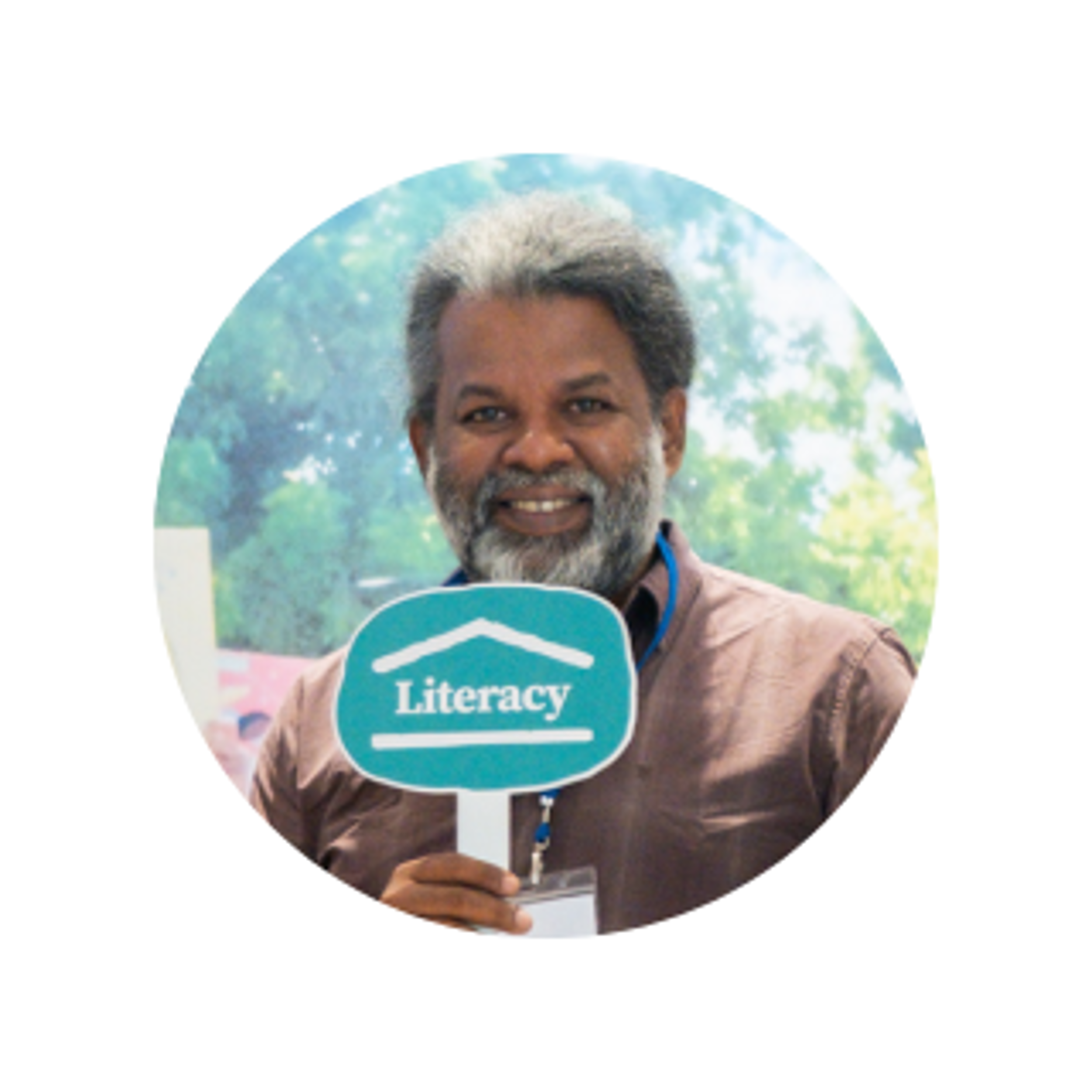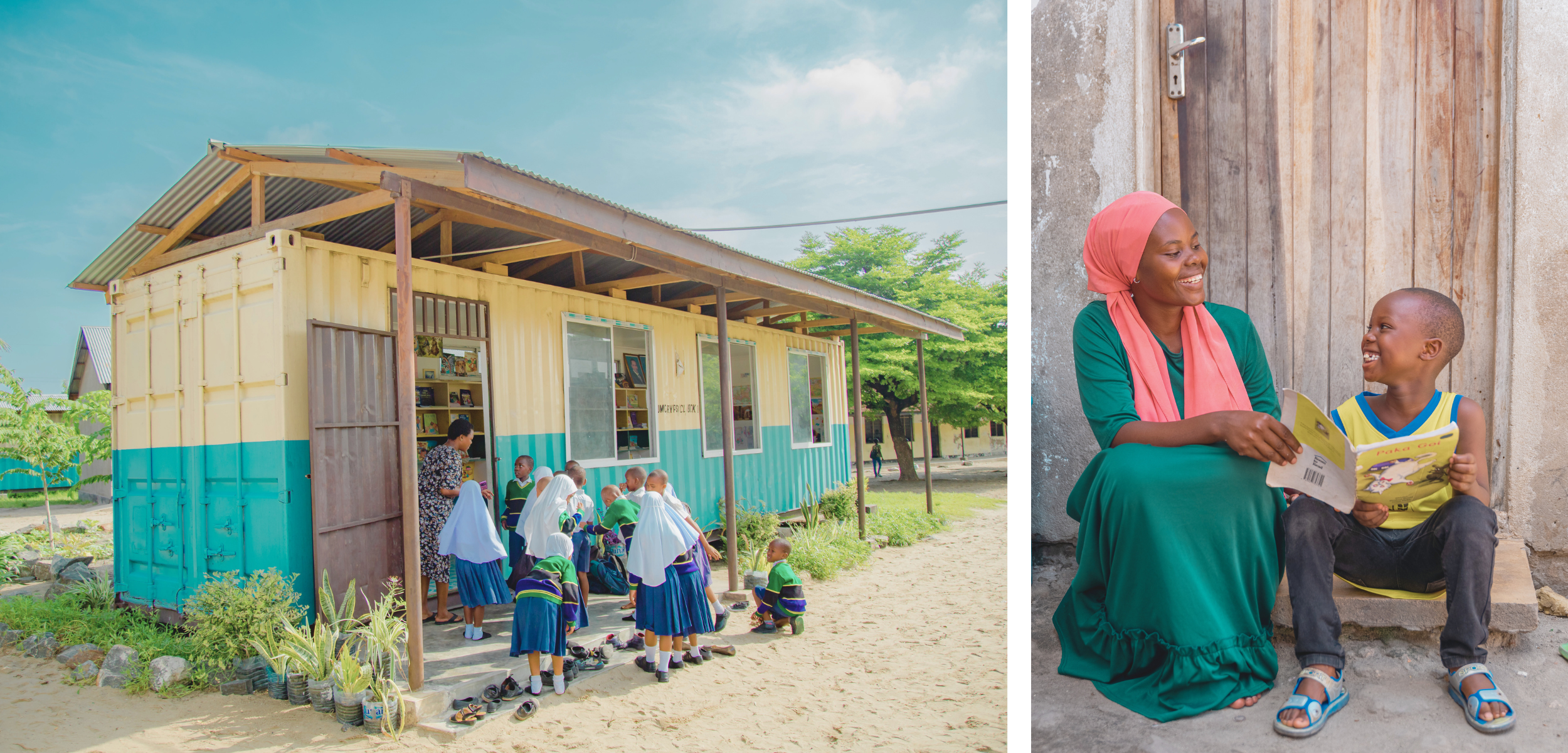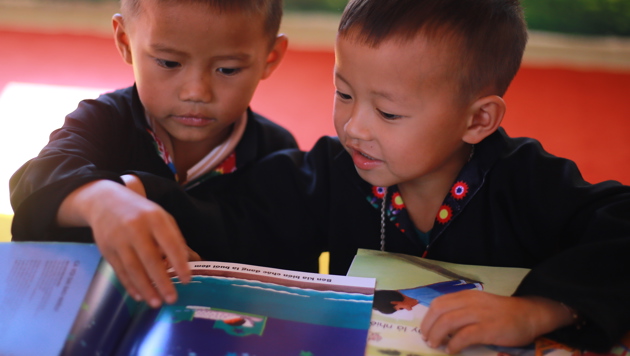A Room to Read literacy advisor explains.
Why are libraries important to a community?
August 06, 2025

By Mahesh Pathirathna
Global Literacy Advisor
Room to Read’s Literacy Portfolio
Recently, I was speaking with primary school teachers in Laos about how learning to read with regular access to children’s books can help children become self-motivated learners — paving the way for a lifetime of learning and growth.
At the end of my explanation, one teacher said, “If it requires books, we will be not able to make our children independent learners. The only option now is for children to learn through teacher-led instruction. They do not have the storybooks or reading materials needed for independent discovery.” Her voice was heavy with disappointment.
I was not surprised by the comment. This is not an uncommon feeling among educators in the historically low-income communities where Room to Read operates. I have heard educators around the world express similar concerns: That age-appropriate, culturally relevant content and curriculum, including teaching materials and children’s literature, are outside their reach, limiting their ability to nurture both the skill and habit of reading that leads to a lifetime of learning.
In that same conversation, another teacher added: “We will not be able to support our children to become self-motivated learners unless we have a library.” 
At Room to Read, we know that literacy is the foundation for all future learning. Learning to read leads to reading to learn. So, why is the world still struggling to equip all children with the foundational skills they need to learn, grow and thrive?
Part of the answer to this question can be found when we ask another: Why are libraries important to a community?
Libraries — in a community or in a school — ensure children, educators and, critically, parents and families have regular access to the best learning materials available in their local contexts. Without libraries, the process and experience of learning is often centered on textbooks and teacher-led instruction, which can significantly limit children’s interest in reading and learning. When schools lack libraries, children miss out on the opportunity to choose books and other educational content that speaks to their interests and experiences. Having that choice is an important factor in developing a true interest in and excitement for reading, and becoming a self-motivated learner. Choice is motivating.

Many governments and school systems around the world are currently seeking to reform literacy pedagogy based on the science of reading, which encompasses a comprehensive body of research on how children learn to read. Through these reforms, the traditional teacher-centered approach to education, used in classrooms around the world, is rapidly being replaced by a child-centered learning model. In this paradigm, self-motivated, active learning is prioritized. When a child is motivated to read, they can more quickly build the skills needed to read independently. Educators can then build more independent learning time into the school day — an essential time for children to learn on their own, in pairs and in groups. Research has shown that this independent learning time is vital for cognitive and meta cognitive development, social-emotional skill building, as well as future academic success.
So, why are libraries important to a community reforming its approach to early-grade instruction?
Let’s consider this example: A teacher asks her students to identify the name of every continent on the globe. She does not identify the continents for students at the head of the class or point them out in a textbook. Instead, she guides the children to the library, where they are encouraged to explore relevant educational materials, reading the names and identifying the locations of the continents on their own. In this way, children take a more active role in their own learning. They build confidence, which in turn bolsters their motivation to continue reading and learning independently.
Without a library filled with books and educational materials, this assignment does not work, and related, data-backed approaches to child-centered, self-motivated learning are of little use.
A print-rich environment is a critical, proven component in literacy education. And a lack of a print-rich environment at home and at school can significantly delay essential education reforms in teaching reading, and lead to unequal learning outcomes. Why are libraries important to a community? Simply put, libraries lead to literacy, creating a foundation for lifelong learning and growth, and creating lasting, positive change in the lives of children and their families.




